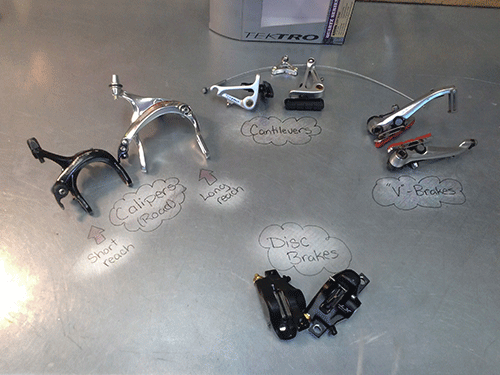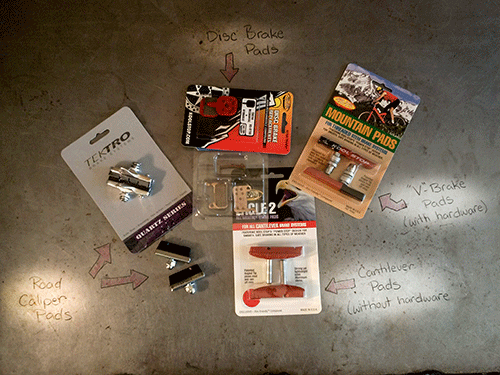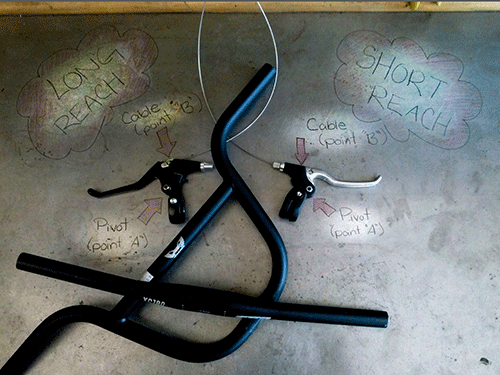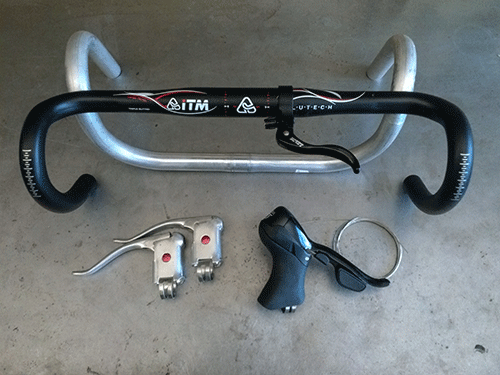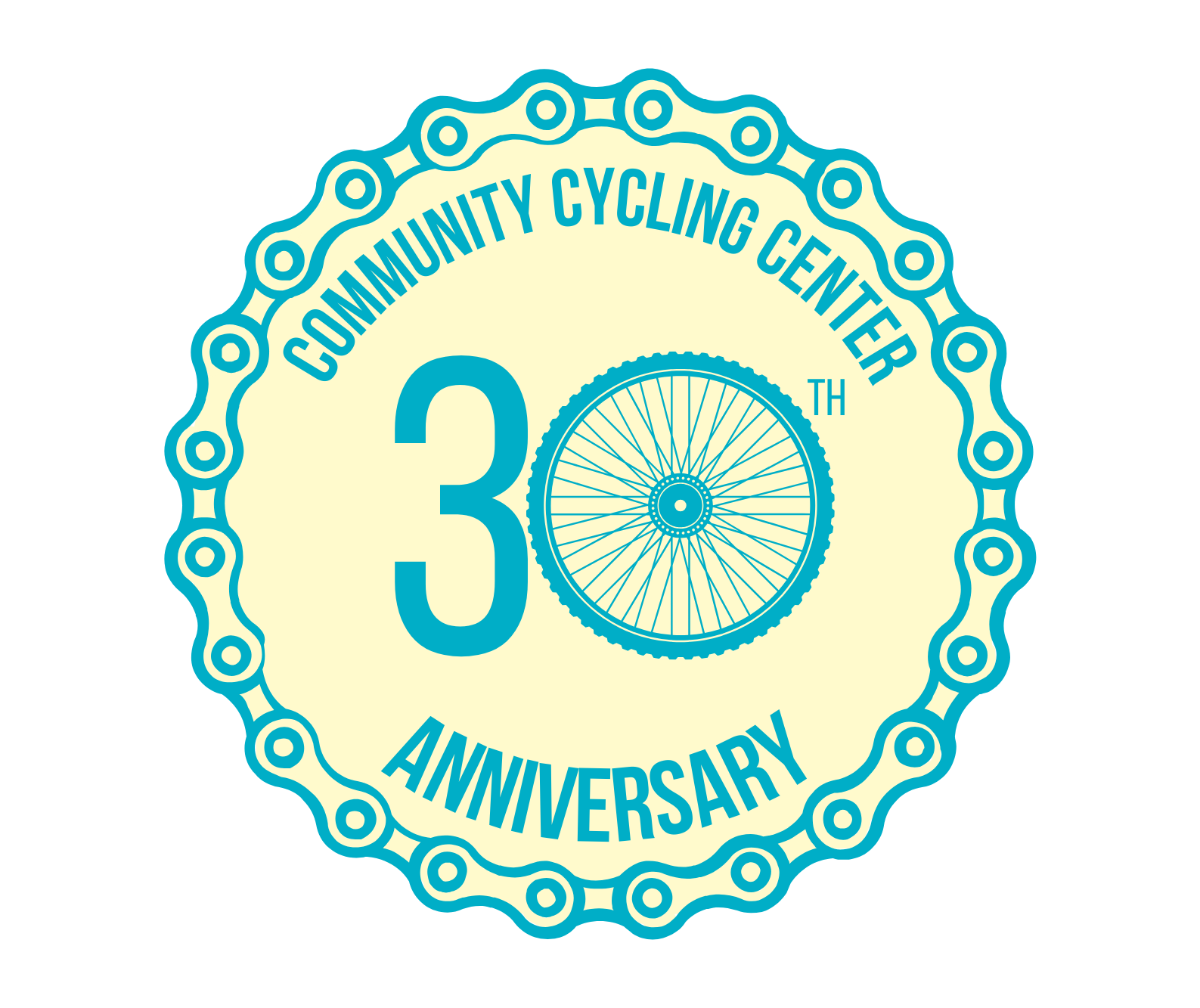Shop tip: types of brakes and levers
By Gwen Koon, Service Supervisor
Introduction
This next series of shop tips over the next several months will be all about creating a basis for more in-depth knowledge. Whether you’re working on a bike you already own or preparing to buy a new one, it’s very helpful to be familiar with all the different types of components. Knowing their names, their uses and their limitations can help you be prepared to ask the right questions and make well-informed decisions.
Types of Brakes
There are 4 common types of brake calipers. Each type works with different brake pads and will mount on the frame differently.
Road Calipers: This type of brake bolts through holes which the manufacturer drills through a bicycle frame. There are two different types of nuts which are used to bolt these brakes on- hex/regular and recessed. It is important to get a road caliper with the correct type of nut for your frame. It is also important to make sure that the caliper arms will be the correct length to line up brake pads with the rim of your wheel. Some are quite short, and others are very long. These calipers work with “short-pull” brake levers (see brake levers section below).
Cantilever Brakes: This type of brake bolts on to “brake bosses” on either side of the wheel. Brake bosses are threaded tubes which the manufacturer attaches to the frame. Cantilever brakes also work with short pull brake levers. They require a “cable yoke” and “straddle cable” to operate.
V-Brakes: This type of brake also attaches to brake bosses, but they require a “long-pull” brake lever (see brake levers section below). They also need a special piece called a “noodle” for the cable to work correctly.
Disc Brakes: Disc brakes mount to special tabs which the manufacturer builds onto the frame. These brakes operate at the center of the wheel (the hub), rather than on the rim like other kinds of brakes. They can be either cable-actuated or hydraulic. Hydraulic brakes require specific levers and hydraulic hoses to operate. Cable-actuated disc brakes work with long-pull brake levers.
Other Types of Brakes: The brake calipers I’ve described above are the ones you’re most likely to find yourself working with. If your brakes don’t look like those, they might be u-brakes, roller-cam brakes, rod-brakes, drum brakes or another less common type of brake caliper. Here is a link to a useful site with many more types of brakes: http://sheldonbrown.com/brakes.html
Types of Brake Levers
There are two broad categories into which almost all brake levers fall: those which are designed for use with drop handle bars, and those which are designed for flat or upright handlebars. Both are pictured below.
Flat/Upright-Bar Brake Levers
- Long-pull brake levers have a greater distance between the point at which the lever pivots (point “A” in the photo) and the end of the cable (point “B” in the photo). This means that they pull more cable when you move the lever. They work for V-Brakes and Disc Brakes.
- Short pull brake levers have less distance between the pivot and the end of the cable, so they pull less cable when you move the lever. They work for Road Caliper Brakes and for Cantilever Brakes.
- Flat-bar brake levers are sometimes joined on the same mounting bracket as a shifter.
Drop-Bar Brake Levers
- Integrated levers are shifters and brake levers combined into one mechanism. If you pull the lever towards the bar, it actuates the brake. If you push the lever or paddle to the side, it actuates the derailleur. The integrated lever is pictured on the bottom right.
- Cross-top or Interrupter levers are levers which clamp onto drop-bars near the stem, instead of “on the drops.” They can be used in conjunction with some standard drop-bar brake levers and all integrated levers. They also work on their own, although that is generally not recommended. The cross-top lever is pictured here mounted to a drop-bar to illustrate how it should be positioned.
- Standard drop-bar brake levers, pictured here on the bottom left, come in many shapes and styles. The set in the photo are older and without hoods, or the rubber covering that some levers have. These levers are designed to be accessible when the riders hands are either “in the drops” on the lower portion of the bars or “riding the hoods” on the top portion of the bars.
Stay tuned for our next shop tip: an introduction to cable, housing, and accessories.
